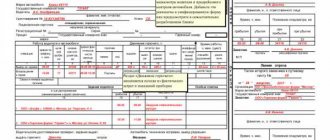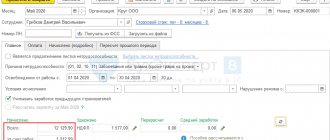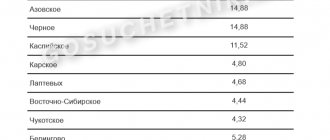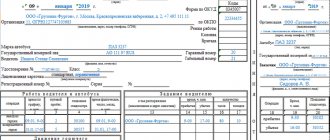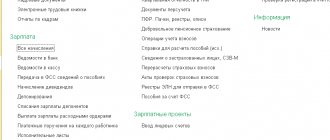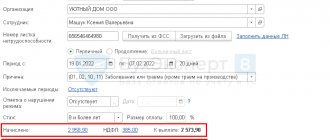What is the document for?
A travel document (travel certificate) is issued to an employee sent on a trip for the purpose of performing official duties.
The certificate is filled out on a unified form according to form T-10 (Resolution of the State Statistics Committee of Russia No. 1 of 01/05/2004). At the same time, current legislation allows the employer to draw up a form of travel sheet independently, including the necessary points and provisions. In this case, the developed format must be consolidated in the accounting policies and other local regulations of the organization.
Do I need to fill out this form in 2022?
From 01/08/2015, Decree of the Government of the Russian Federation of December 29, 2014 No. 1595 excluded from the text of the Regulations on the specifics of sending employees on business trips, approved by Government Decree of October 13, 2008 No. 749, the requirement for the mandatory issuance of travel certificates. Despite this, the employer, on the basis of the provisions of Articles 21 and 189 of the Labor Code of the Russian Federation, has the right to issue a local regulatory act providing for the mandatory registration and completion of official documents in the organization. Use either a self-developed form or a standardized T-10 form.
Unified form T-10
Is it necessary to compile
Previously, this document was required to be completed when employees were leaving on a business trip. According to labor legislation, the purpose and duration of the trip had to be stated in the certificate.
In 2015, the obligation to draw up a travel certificate was removed from institutions (RF RF No. 1595 dated December 29, 2014). Since January 2015, the employer himself decides whether to fill out a special certificate for business trips or not. If the organization accepts its completion, this must also be specified in the internal regulations of the institution.
Front part
Key information must be entered on the title side. Here the details of the organization itself are indicated: its name and OKPO code, as well as the parameters of the certificate itself (number and date).
Next, you need to fill out information about the employee sent on a business trip and the work purpose of the trip. The following information is indicated on the front:
- Full name, personnel number and passport details (if necessary) of the employee;
- structural unit and position of the person sent on a business trip;
- information about the receiving party (city, name of organization);
- purpose of the trip;
- duration of the trip, indicating the start and end dates of the trip and the total number of days.
The front side of the sheet is certified by the manager’s signature and seal (if available).
Rules for filling out the traveler’s certificate
The sequence is as follows:
- The first step is to fill in all the information relating to the employee of the company. In addition to the full name, which must be indicated in full, a personnel number and position held are indicated in accordance with the order.
- When recording passport data, you must double-check it carefully. Even if there is a minor mistake, you may have difficulties completing paperwork at the place of your business trip.
- When filling out information regarding the duration of the trip, it is necessary to enter the number of calendar days in words, without taking into account the time that the employee spends on the road.
- Then you need to indicate two dates, namely from what date and until what date the employee is on a business trip.
- After this, the passport details of the employee sent on the trip are entered into the document.
When the document is completely filled out, it is stamped by the head of the enterprise and given to the employee sent to another organization. This document can be filled out either by hand or using computer technology.
If you make a mistake when filling out form No. T10, you must cross out the incorrect information and indicate the correct data above it
. Each correction must be signed by an authorized person.
All organizations to which the posted employee visited must be stamped with an arrival and departure stamp.
The signature of the dispatched employee on the document indicates his familiarization with the order. Some categories of employees can be sent on a business trip only with their written consent, these include:
- women with children under 3 years of age;
- persons with disabled children;
- fathers who raise their children alone;
- persons raising children under 5 years of age alone;
- guardians of minor children;
- persons who are currently caring for a sick family member according to medical indications.
In order to send one of these employees, it is necessary to make a footnote in the “Reason” field to the statement of consent to the business trip, drawn up in writing.
Back part
All movements of the employee are recorded on the back. Here the receiving organization puts down the following marks:
- about the date of actual arrival;
- about the day of departure.
Thus, the actual number of travel days is displayed on the back. It is also mandatory to indicate the last name, first name and patronymic of the employee and the place of business trip (city or other locality).
The turnover of the sheet is certified by the head of the receiving organization, and, when used, the seal of the institution is affixed.
GLAVBUKH-INFO
Based on the employer’s decision, the employee is issued a travel certificate, which determines the duration of his stay on a business trip, as well as establishing the date of arrival at the destination point(s) and the date of departure from it (clause 7 of the Regulations on Business Travel).
The travel certificate is issued in one copy and signed by the employer, after which it is given to the employee and retained by him for the entire duration of the business trip. In this case, the actual length of stay at the place of business trip is determined by the marks on the dates of arrival at the place of business trip and departure from it, which are affixed to the travel certificate. These marks are certified by the signature of an authorized official and the seal used in the economic activities of the organization to which the employee is sent.
Thus, issuing a travel certificate when traveling on a business trip is mandatory. It is this document that confirms the actual duration of the employee’s stay on a business trip. The absence of such a document or marks in it will not allow the organization to prove the validity of the expenses incurred in connection with the business trip (see Resolution of the Second Arbitration Court of Appeal dated 05/07/2009 in case No. A29-800/2009).
If marks on the travel certificate cannot be placed for objective reasons, for example, negotiations with individuals who do not have a seal, then the fact of being at the place of business at the specified time can be confirmed by other documents, namely:
- an order (instruction) to send an employee on a business trip;
- official assignment for sending on a business trip and a report on its implementation;
- travel documents, which indicate the dates of arrival and departure from the destination;
- hotel invoice confirming the period of stay at the place of business trip.
The specified list is given in the letter of the Ministry of Finance of the Russian Federation dated August 16, 2011 N 03-03-06/3/7.
It is advisable to establish the procedure for documenting the presence of an employee on a business trip in cases where there are no marks on the travel certificate in a local regulatory act (letter of the Ministry of Labor of Russia dated February 14, 2013 N 14-2-291).
In letters dated November 16, 2006 N 03-03-04/2/244, dated October 24, 2006 N 03-03-04/2/226, the Ministry of Finance of Russia indicated that the order to send an employee on a business trip and the travel certificate have the same purpose. The parallel preparation of two documents on one fact of economic activity was not necessary. Therefore, if a travel order was issued, a travel certificate could not be issued. The courts previously took the following position: if there is a business trip order, then in order to recognize expenses, the issuance of a travel certificate is not necessary and its absence does not entail the unjustification of travel expenses (Resolutions of the Federal Antimonopoly Service of the Ural District dated 04.05.2007 N F09-3119/07-С2, FAS West-West Siberian District dated 05/07/2007 N F04-2644/2007(33834-A45-14)).
However, at present, in connection with the introduction of the Regulations on Business Travel, where the travel certificate is indicated as a document confirming the employer’s expenses for a business trip along with the official assignment, it should be recognized that its execution is mandatory.
A practical situation. Is it necessary to obtain a travel permit if an employee is sent on a business trip abroad?
A travel certificate is issued based on the employer’s decision (clause 7 of the Regulations on Business Travel). Such a certificate confirms the length of the employee’s stay on a business trip.
For an employee sent to one of the CIS countries, a travel certificate may be the only document that confirms the duration of his business trip. Border authorities may not be authorized to mark documents on crossing the state border of a CIS member country if an intergovernmental agreement on visa-free travel for citizens of both countries has been signed with it. For example, a Russian citizen is allowed to enter the territory of Ukraine or Belarus on the basis of a Russian passport (Protocol dated March 24, 2005 “To the Agreement between the Government of the Republic of Belarus, the Government of the Republic of Kazakhstan, the Government of the Kyrgyz Republic, the Government of the Russian Federation and the Government of the Republic of Tajikistan on mutual visa-free travel of citizens from November 30, 2000,” Note of the Ministry of Foreign Affairs of Russia dated 02.02.2007 N 3544/kd). However, it is prohibited to put marks on entry into and exit from the territory of the named states in the internal passport of a citizen of the Russian Federation. This follows from clauses 5 and 6 of the Regulations on the passport of a citizen of the Russian Federation (approved by Decree of the Government of the Russian Federation of 07/08/1997 N 828).
The website of the Russian Ministry of Foreign Affairs (www.mid.ru) contains a list of CIS member countries with a simplified entry procedure.
If an employee is sent on a business trip outside the Russian Federation, including to CIS countries with which Russia has not concluded intergovernmental agreements that abolish any marks on crossing the state border in documents for entry and exit, a travel certificate does not need to be issued (clause 15 of the Regulations about business trips). In this case, the days of the employee’s stay on a business trip are determined by the marks of the border service on entry into and exit from the country.
The travel certificate is drawn up in form N T-10. It indicates the name of the organization in accordance with the constituent documents. It also includes the last name, first name and patronymic of the employee, his structural unit and position. The travel certificate must indicate the destination - country, city, organization (for example, “Russia, Tver, Montazhspetsstroy LLC”). It is also necessary to reflect the purpose of the business trip (in accordance with the official assignment), the number of days of the business trip (not counting the time spent on the road), indicate its start and end dates. The travel certificate contains the details of the passport or a document replacing it. The travel certificate is signed by the head of the organization or another authorized person.
On the reverse side of the travel certificate is the date when the employee left on the business trip. The date of disposal is certified by the signature of an authorized person (HR employee, accountant, head of the relevant structural unit or head of the organization) and the seal of the organization. Upon arrival at the place of business trip, the date of arrival is indicated on the travel document and certified in the same way. If an employee moves to different territorial points during a business trip as part of the execution of one assignment, then arrival and departure from destinations are also certified by the signature of an authorized person and a seal. The last mark on the travel certificate reflects arrival at the place of permanent work.
Registration of a travel certificate for a one-day business trip
According to the previously applied Instructions, a travel certificate could not be issued if the employee had to return from a business trip on the same day on which he was sent (clause 2 of the Instructions). The Ministry of Labor of Russia indicated that clause 2 of the Instruction continues to be in effect and, therefore, when sending on a one-day business trip, it is not necessary to issue a travel certificate (letter dated February 14, 2013 N 14-2-291).
However, an analysis of the Regulations on business trips, adopted in accordance with Art. 166 of the Labor Code of the Russian Federation, allows us to draw a different conclusion.
Paragraphs 7 and 15 of this Regulation provide for the only case in which a travel certificate is not issued—when an employee is sent outside of Russia (with some exceptions). Thus, when sending an employee on a one-day business trip, one should follow the general rules and issue a travel certificate. Rostrud adheres to a similar point of view in Letter dated 03/04/2013 N 164-6-1.
22.10.2013
Contents and sample
The T-10 form must be filled out in strict accordance with the established rules. Errors in the document are not allowed. If an inaccuracy was made during registration, the erroneous information must be crossed out with one line, and the correct information must be written on top. Corrections must be certified. The specialist responsible for preparing the document must sign and affix a stamp (if available at the institution).
If an employee must visit several cities or host enterprises as part of one trip, then chronology must be strictly observed when making notes.
